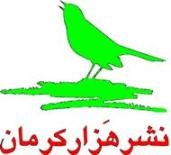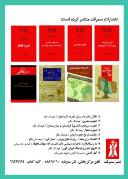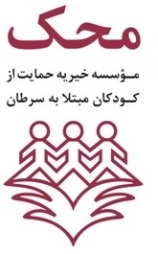ЪҜШұШҜШҙЪҜШұЫҢ
Golestan Palace Iranian works of art and architecture from Safavid era to the present
- ЪҜШұШҜШҙЪҜШұЫҢ
- ЩҶЩ…Ш§ЫҢШҙ Ш§ШІ ШіЩҮ ШҙЩҶШЁЩҮ, 13 ШўШЁШ§ЩҶ 1393 12:36
- ШЁШ§ШІШҜЫҢШҜ: 7193

resource: Magazine events (www.events.ir); No 2 September 2003
В
This article has been prepared with the kind cooperation of the management of the Palace.
В
For many centuries Iran used to be the source of admiration and therefore envy for other peoples who frequently invaded the country to plunder its great wealth. Because of these wars the nation suffered, yet it was enriched through the diversity of its ethnic groups, languages, arts, and culture in general. After all, does not the beauty of life lie in its diversity?
Quite often the invaders came to stay and eventually became, like the natives, refined and cultured. Most ended up serving the nation as soldiers, scholars and artists committing themselves to the country and its people and considering themselves as loyal Iranians.
Like the history of any nation, Iranian history can be divided into various periods that have their own characteristics and peculiarities. Each has its arts that reflect the spirit of the time, but this is perhaps best expressed in architecture: buildings that are intricately interwoven with social life. In buildings we live, in buildings we entertain, in buildings we worship, in buildings we usually dieвҖҰ Even the altar in the open space of Choghazanbil in the present day Khuzistan Province, where the Elamites are thought to have sacrificed animals to their gods over 3,000 years age, is surrounded by magnificent buildings. Buildings! Ancient buildings!
So many set on fire, so many erased from the face of the earth, but thank God many still survive, though often as ruins. Alexander burnt down the magnificent palace of Takht-e- Jamshid (the throne or capital of Jamshid), better known in the West as Persepolis. Chengiz Khan, the Mongol, burnt down entire towns. Moslem Arabs
effaced many splendid paintings and reliefs because Islam is against idolatry and so fanatic Moslems forbid pictures of human or animal figures lest they be used for worship.
В
Fortunately, since the Safavid era, which began in 1502 AD, there has been no serious invasion of Iran except the campaign of Ashraf Afghan which brought some but not serious destruction and lasted for only a short period. Ashraf N Kasraeian undermined the Safavid dynasty in 1722 but shortly after Nader Shah uprooted
his successor who was also his murderer. Almost every building of significance, which has been built since 1500 is in place. Some of these buildings, especially those built during the Safavid era or the Golden Period вҖ“ so-called because of the brilliant artistic, military and economic achievements of this era, the earlier parts in
particular вҖ“ are exquisite works of architecture and art.
These are mainly located out of Tehran but there is one building complex in Tehran which was started in those times and gradually expanded in the years and centuries that followed, down to the 20th century. This is the collection of buildings called Kakh-e-Golestan or Golestan Palace. Golestan Palace is located near TehranвҖҷs Great Bazaar, and was initially a part of a citadel built by the Safavid Shah Tahmasb, later restored by Karim Khan of Zand dynasty in 1759. The Qajars (1797-1927) added a number of palaces to this complex and used it as the residential palace of the king.
Nassereddin Shah (reigned 1848-1897) was one such king who expanded and beautified this palace considerably. At his time the ShahвҖҷs residence and the centre of governance of the country occupied one-third
of the area of the old citadel. The ShahвҖҷs residence, like all traditional Moslem homes of those days, was divided into two parts: the birooni (exterior) and the andarooni (interior). The first was where men met and worked or socialized. The second was where women lived and received their husbands, sons, brothers or fathers, sometimes at noon for the men to eat lunch and pass the siesta particularly in summertime, and every
evening for them to have supper and sleep.
The ShahвҖҷs court, the centre of government and rule, was, naturally, where courtiers gathered round the Shah from early morning, while the Shah sat on the throne Nader had brought from India. In 1927 Reza Shah of Pahlavi dynasty became king. He did much to add to the beauty, glamour and awe of this palace, which was his residence as well as his court.
The decorations and ornaments incorporated in the buildings of this palace complex reflect the spirit of the Iranian nation and its artistic talents: architecture, paintings, murals, tile works, reliefs in stone etc, as well as
decorative furniture and such articles as pen-boxes, boxes for sweetsвҖҰ (all inlaid works), lattice partitions and so on. The main court, that is the hall where the king sat during most of the day surrounded by his ministers, courtiers and attendants, known as Takht-e- Marmar (the Marble Throne) was built by Karim Khan of Zand
dynasty in 1796.
The marble throne itself was built at the order of Fathali Shah of Qajar dynasty in 1806. It is made of yellow marble, 65 pieces in all. From then on Iranian kings except one were all crowned in the same hall and on this very throne. The last king to be thus throned was the First Pahlavi, Reza Shah, in 1921. His son, Mohammad
Reza, preferred to be throned in another building, on a throne he ordered to be made especially for the occasion.
In 1760 Karim Khan built a building known as Karim KhanвҖҷs Place of Seclusion, where he would spend some hours by himself when he preferred to be alone, withdrawn from the world. Over a hundred years later Nassereddin Shah, the Qajar, who had visited Europe in 1873, decided to turn this building into a museum. From 1874 till 1882 all the precious objects that were worthy of being kept in a museum were brought here beginning with the Tavoos (Peacock) Throne.
In 1967, Mohammad Reza of Pahlavi dynasty was the first and the last king to be throned in this hall. Aiyneh (Mirror) and Salam (Salute) Halls were built together and next to each other, from 1874 till 1877. The first has become famous, interestingly enough, because of a beautiful paining that the renowned Iranian painter, Kamal-ol-molk, made of the interior of this hall. Berelian (Brilliant in the sense of the gem) Hall is another of the
buildings of this Complex. It was built at the order of Nassereddin Shah, though later monarchs made considerable changes in it. It is now a museum of 19th century European paintings. Khabgaah (sleeping quarters) was built in 1959 on the occasion of the visit of Queen Elizabeth to Iran, to provide a decent residence for the Queen.
From then on almost every head of state, king or president, who officially visited Tehran, stayed in this building, the last being the Chinese president in 1978. Badgeer (Ventilated) Building, which was built during the reign of Fathali Shah (1798-1836), is located on the southern side of the complex and was modified by Nassereddin Shah. Presently it houses old photographs of the Qajar era. Almas (Diamond) Hall was initiated by Nassereddin Shah. Today, it is a museum of many objects, all from Fathali ShahвҖҷs era.
Abyaz (White Palace) вҖ“ thus known for its white faГ§ade вҖ“ was built during the reign of Nassereddin. Presently it
houses precious objects that Sultan Abdolhameed, the Ottoman Emperor, gave to this Iranian king as gifts.
This is where, till 1954, the cabinet used to hold its meetings. In 1968 it was turned into a museum of anthropology. Shamsolemareh (the Sun of all Buildings) was built on the eastern side of the complex beginning 1865. It is a fivestorey building constructed on the basis of European buildings as the model.
From the days of Fathali Shah, and at his initiative, old books and manuscripts in particular have been purchased from all around Iran and transferred to the Golestan Complex. By 1936 the Complex had a unique and magnificent collection, which was transferred to the then recently established National Library, where they still remain.





